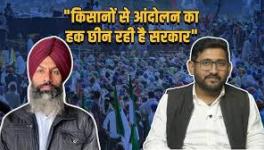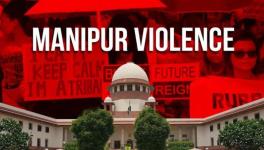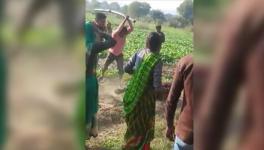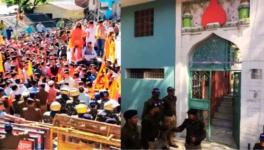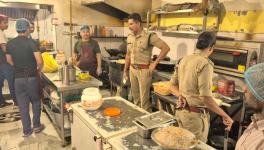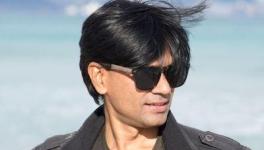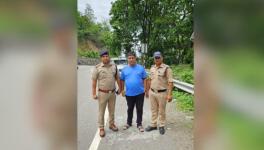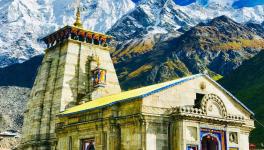After 27 Years of Twists and Turns, CBI Court to Pronounce Verdict on Babri Demolition Case
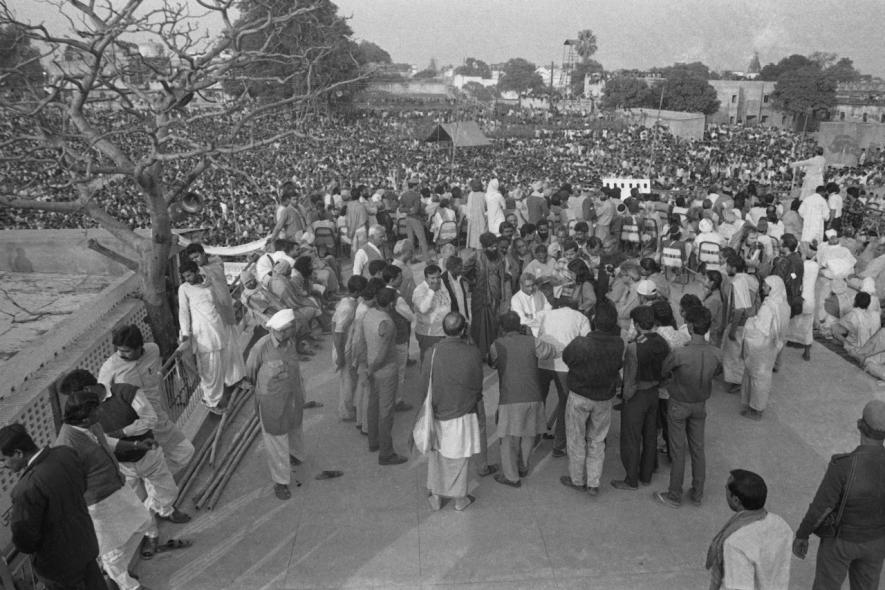
Image credit: Praveen Jain
Twenty-seven years after the historical 16th century Babri Masjid at Ayodhya was razed to ground on December 6, 1992, a special court of the Central Bureau of Investigation (CBI) in Lucknow is expected to deliver the verdict on September 30 on its illegal demolition. The high-profile case involves several leaders of the ruling Bharatiya Janata Party (BJP), including LK Advani, MM Joshi, Kalyan Singh, Vinay Katiyar, Sadhvi Ritambhara and others.
The apex court had earlier ordered status quo on the entire land (67.703 acres) where the Babri mosque stood before it was brought down by Hindutva activists, who believed it was built on the ruins of a temple marking the birthplace of Lord Ram. The disputed structure was occupying 2.77 acres of the total land.
The judgment in the criminal case will follow the final verdict in the Babri mosque title dispute which was declared by the Supreme Court on November 9, 2019. The apex court had ordered the disputed land (2.77 acres) to be handed over to a trust (to be created by the central government) to build a Ram temple on the disputed area.
The court had also ordered the government to give an alternate piece of land measuring 5 acres at another place to the Uttar Pradesh Sunni Central Waqf Board for the purpose of construction of a mosque as a replacement for the demolished Babri mosque.
The top court had also emphasised that the communal riot that caused damage to the domes of the medieval mosque in 1934, its desecration on the night of December 22, 1949, by placing idols and the demolition in 1992 constituted a “serious violation of the rule of law”.
The disputed mosque was demolished in the presence of heavy police force. The crowd consisted mainly of workers from various organisations associated with the Bharatiya Janata Party (BJP), the Vishwa Hindu Parishad (VHP), the Shiv Sena and the Rashtriya Swayamsevak Sangh (RSS). Soon after the demolition, a temporary temple was built overnight using tarpaulin sheets.
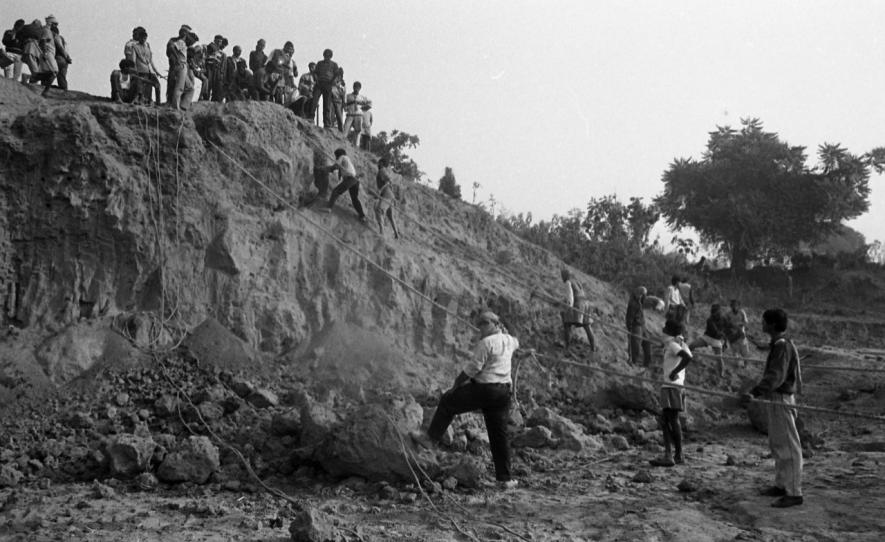
Image credit: Praveen Jain
The judgement, to be pronounced 28 years too late, is, however, not the final verdict. The accused can then move high court and then the apex court, challenging it.
Of the total 49 accused, 17 have died, including Shiv Sena chief Bal Thackeray and Vishwa Hindu Parishad leader Ashok Singhal. The 32 accused who are alive include senior BJP leaders LK Advani, Murali Manohar Joshi, Kalyan Singh, Mahant Nritya Gopal Das, Uma Bharti, Sakshi Maharaj, Brajbhushan Sharan Singh and Vinay Katiyar, among others.
More than 50 witnesses have also died. The accused, witnesses and advocates of the cases have all grown old and weak. The statements of a total of 350 witnesses were recorded in the case. Voluminous documents and items have been placed on record as evidence by the prosecution.
Also see: Babri Masjid Demolition: Journalists Recount Horror of Dec 6, 1992
With derailed investigation and many twists and turns, the hearing in the cases of demolition and alleged criminal conspiracy gained momentum only after the Supreme Court on April 19, 2017, ordered day-to-day trial to be concluded in two years.
On July 19, 2019, the top court using its extraordinary jurisdiction under Article 142 extended the tenure of the special judge, Surendra Kumar Yadav, trying the case beyond retirement and ordered him to deliver verdict within nine months, which expired in April this year.
The Case History: FIRs
The first FIR (no. 142/1992 and case no. 197/1992) was filed against “lakhs of unknown kar sevaks” at 05:15 PM — minutes after the medieval period mosque was razed to the ground — by Ganga Prasad Tiwari, a sub inspector, at the Ramjanambhoomi Police Station on December 6, 1992.
Tiwari said in his complaint, based on which the first FIR, was lodged, “At around 12 noon or 12.15 PM, from Fixing Gate No. 1 (the railing barricading the Babri Masjid), a mob comprising thousands of ‘karsevaks’ began gathering near Chabutra (Ram Chabutra a platform erected merely 50 yards away from the mosque’s central dome) where saints and priests were sitting in large numbers to perform ‘kar seva’. The ‘karsevaks’ had ‘phawda’, ‘sambal’, ‘gaiti’, ‘bekcha’ (all used as construction tools) in their hands. Instead of letting saints and priests perform the ‘kar seva’, they themselves started performing it. They also began demolishing the mosque. When they were stopped from doing so, they got further agitated and the crowd began swelling. They brought the iron grill barricading around the mosque down, climbed up to the top of the mosque and started demolishing it.”
The sub-inspector further stated that the policemen stationed there resorted to lathi-charge. “This led to strong sloganeering of ‘Jai Shri Ram’ and other provocative chantings from different sides of the crowd. Now, another strong mob thronged the Babri Masjid complex and attacked the building from all sides. As the use of force became ineffective, the police force present there was ordered to fire tear gas shells. The order was followed, but it also failed to stop the crowd as the ‘karsevaks’ had covered their faces. They started pelting stones on the police force. Several ‘karsevaks’ suffered injuries in the police action but the demolition kept going on. The disputed complex was finally demolished and several government properties in the complex such as wire case set, CCTV cameras, dragon lights, ropes, barbed wires, chairs, tables, etc were destroyed,” reads the FIR accessed by NewsClick.
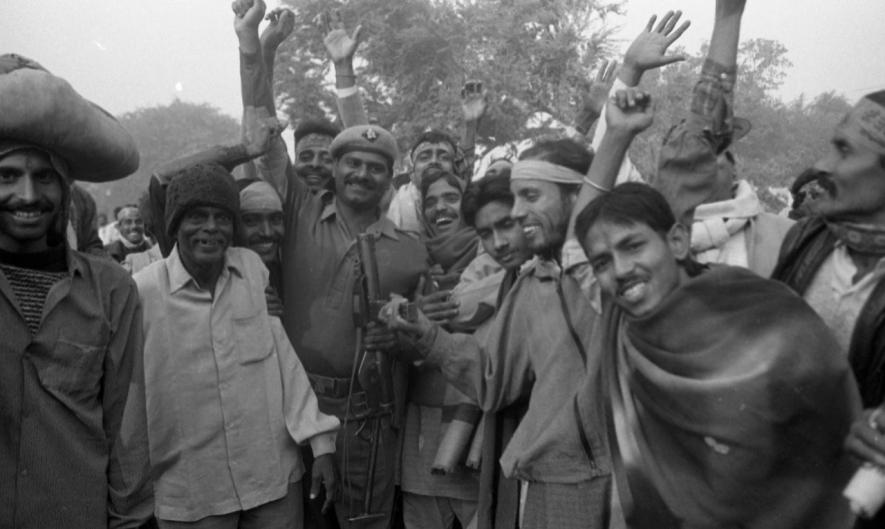
Image credit: Praveen Jain
The “unknown karsewaks” were booked under Sections 395 (dacoity), 397 (Robbery or dacoity with attempt to cause death or grievous hurt), 332 (voluntarily causing hurt to a public servant in the discharge of his duty), 337 (causing hurt by act endangering life or personal safety of others), 338 (causing grievous hurt by act endangering life or personal safety of others), 295 (injuring or defiling place of worship with intent to insult the religion of any class), 297 (trespassing), 153A (promoting enmity between different groups on grounds of religion, race, place of birth, residence, language, etc.) of the Indian Penal Code (IPC) and Section 7 (Molesting a person to prejudice of employment or business) of the Criminal Law Amendment Act.
Also read: Ayodhya Verdict: Majoritarian Faith Prevailed, Say Some Experts
Ten minutes later, a second FIR (no. 143/1992 and case no. 198/1992) was filed on the complaint of the same person against LK Advani, Ashok Singhal, Giriraj Kishore, Murli Manohar Joshi, Uma Bharti, Vinay Katiyar, Vishnu Hari Dalmiya and Sadhvi Ritambahra for hate and provocative speeches.
In this complaint, Tiwari said, “(After discharging my duties), I reached Ram Katha Kunj in the disputed complex where Vishwa Hindu Parishad’s Ashok Singhal and Giriraj Kishor, Bharatiya Janata Party’s Lal Krishna Advani, Murli Manohar Joshi, Vishnu Hari Dalmiya (then BJP’s MP from Faizabad) and Uma Bharti and Bajrang Dal’s Vinay Katiyar and Sadhvi Ritambhara were present on a stage. With their provocative speeches, they were emotionally charging the ‘karsevaks’. Their chant was ‘Ek Dhakka Aur Do, Babri Masjid Tod Do (Give one more push, bring down Babri mosque)’. They were also asking the charged crowd to demolish the structure, which, according to them, symbolised Mughal-era slavery. The charged mob was chanting the slogan ‘Katua Kaate Jayenge, Ram Naam Chillayenge (when those circumcised are butchered, they will chant Ram’s name), ridiculing Muslims. Amid slogans of ‘Ram Lalla Hum Aayenge, Mandir Wahin Banayenge (Lord Ram, we will come and build a temple there only)’, the leaders were provoking the ‘karsevaks’ to demolish the mosque. As a result, the disputed complex was demolished, which severely dented the national integrity. The incident was witnessed by police and administrative officers and journalists stationed there.”
Also see: After Ayodhya: Indian Constitution and Equality Before Law
The FIR was lodged under Sections 153A (promoting enmity between different groups on grounds of religion, race, place of birth, residence, language, etc.), 153B (imputations, assertions prejudicial to national integration) and 505 (statements conducing to public mischief) of the IPC.
In addition, 47 other FIRs were registered in the following days. These were related to offences of assault on journalists, and looting and destroying their cameras and other gadgets.
On December 8, 1992, Advani and other leaders were arrested and kept in the Matatila Guest House at Lalitpur.
THE INVESTIGATION
Interestingly, the case (FIR no. 142/1992 and case no. 197/1992) related to demolition against “unknown karsevaks” was handed over to the CBI for investigation, while the other case (FIR no. 143/1992 and case no. 198/1992) against the high-profile politicians were transferred to the CB-CID of the Uttar Pradesh Police.
The CB-CID filed a chargesheet in February 1993 against all eight accused (Ashok Singhal, Giriraj Kishore, Lal Krishna Advani, Murali Manohar Joshi, Vishnu Hari Dalmia, Vinay Katiyar, Uma Bharti and Sadhvi Ritambhara) who were named in FIR No. 198/1992.
A special court was set up at Lalitpur for the trial of the case. Later, the court was shifted to Rae Bareli, keeping commuting convenience in mind.
However, on August 27, 1993, based on a government order, all 48 cases, except the case no. 198, was transferred to the central probing agency for investigation. The CBI also took the permission from the court to re-examine case number 198, which was under trial at Rae Bareli.
CONSTITUTION OF SPECIAL COURT IN LUCKNOW
The Uttar Pradesh government on September 9, 1993 issued a notification for the formation of a special court in Lucknow for the trial of 48 cases in consultation with the Allahabad High Court. But this notification did not include case number 198, which was being tried in the special court of Rae Bareli.
Later on October 8, 1993, on the request of the CBI, the state government issued a revised notification and added case number 198 to the jurisdiction of the Lucknow special court. But the state government did not consult the HC for this. This technical error would later be used by Advani and other accused in the HC.
On October 5, 1993, the CBI finally filed a consolidated chargesheet against 40 people in all 49 cases in a special court in Lucknow. It also filed a supplementary chargesheet in the case on January 11, 1996, against nine other well-known people. So, the total number of accused climbed up to 49.
TWIST AND TURNS DURING TRIAL
After chargesheets were filed against top leaders of BJP and its affiliates, the trial proved a tough road for prosecution as the cases were full of legal complexities.
Special CBI Judge Yadav on September 9, 1997, held that the case prima facie was fit for framing of charges against the accused under Section 120(B) — criminal conspiracy. After the court ordered that the charges would be framed against the accused in the next hearing, some of the accused knocked at the doors of the Lucknow Bench of the Allahabad High Court against it.
The matter was pending till February 12, 2001, when Justice Jagdish Bhalla of the Lucknow Bench passed an order, observing that there was no illegality in a consolidated chargesheet for all 49 FIRs because the crimes were committed in the same course of action for accomplishing a conspiracy.
However, the HC found a lapse on part of the Uttar Pradesh government in setting up a designated court for the trial of case no. 198/1992 — the case related to hate speech against Advani, Joshi, Singhal, Bharti and others.
The court upheld framing of charges against the accused in all 48 cases, except case no. 198 against the political bigwigs — Advani, Joshi, Uma Bharti, Vinay Katiyar and others. The HC, however, observed that the state government’s faulty notification dated October 8, 1993, for setting up a designated trial court was changeable and could be done through another notification. As a result, the trial court in Lucknow stopped its proceedings on May 4, 2001.
Also read: Ramjanmabhoomi Case: Line Between Reason and Faith
On June 16, 2001, the CBI wrote to the state government and asked for rectification of the error in its notification pointed out by the HC so that the special court could be empowered to resume trial. But the state government, under the chief ministership of BJP’s Rajnath Singh, did not issue any fresh notification.
The CBI then filed a petition in another designated court in Rae Bareli on January 27, 2003, appealing it to proceed with the trial of the case no. 198/1992 — which is related to hate speeches.
On September 19, 2003, in an interesting turn of events, a special magistrate in the Rae Bareli court discharged Advani in case no. 198/1992 but ordered framing charges against the remaining accused. Advani was then Deputy Prime Minister of the country.
The Rae Bareli court’s decision was challenged in the HC, which on July 6, 2005, ordered re-framing of charges against Advani and all other accused. The charges were finally framed by the Rae Bareli court against Advani and all other accused on July 26, 2005.
With the trial hanging between two courts (Lucknow and Rae Bareli), the CBI approached the Supreme Court in 2011 and filed an affidavit on March 20, 2012, arguing that there should be a common trial of all 49 cases. The probing agencies made the following submission:
(a) Probes in all 49 cases had revealed that there was a single conspiracy hatched by all accused to demolish the disputed structure.
(b) All the accused took part and played their roles in fulfilling their common goal, which was demolition. So, they are accused of criminal conspiracy. All 21 accused against whom the proceedings were dropped on the order of the Allahabad High Court were part of the criminal conspiracy.
(c) The 13 accused who were not being tried for any offences in any court of law were party to the conspiracy and demolition.
(d) Therefore, it is in the interest of justice that all the accused involved in criminal conspiracy and demolition of the disputed structure were tried in the court of special judge at Lucknow.
After pending for around five years in the top court, in a ruling on April 19, 2017, the court struck down the Allahabad High Court’s order to drop conspiracy charges. The SC ordered to invoke the charges of criminal conspiracy against the accused, including Advani and 20 others. The trial of all cases was also brought back to the Lucknow court.
SUPREME COURT ORDER
The Supreme Court in July 2019 extended the tenure of the special judge to complete the trial against Advani and others in a time-bound manner. Issuing the directive, Justice RF Nariman said, “Judge Yadav had said he has made substantial progress in the case and has sought extension of time to complete the trial.”
The apex court also set a deadline of nine months to complete the trial. The SC said that “examination of all evidences, as well as prosecution and defence witnesses must be completed within six months from today (July 19, 2019). Oral arguments should be kept to the minimum, all parties to file written arguments.”
Also read: Alchemy in ‘New India’: How Faith Becomes Law
Following the SC’s earlier and the new order, there has been a speedy trial in the case as the charges were framed and trial on the single consolidated chargesheet began. But since Kalyan Singh was appointed as Governor of Rajasthan, the trial against him was stopped since he occupied a constitutional office.
After Singh demitted the office of the Governor in 2018, the trial against him began. Witnesses related to his case started to appear and examined. While 57 witnesses appeared in the Rae Bareli court, the rest appeared in the special court in Lucknow.
Get the latest reports & analysis with people's perspective on Protests, movements & deep analytical videos, discussions of the current affairs in your Telegram app. Subscribe to NewsClick's Telegram channel & get Real-Time updates on stories, as they get published on our website.









